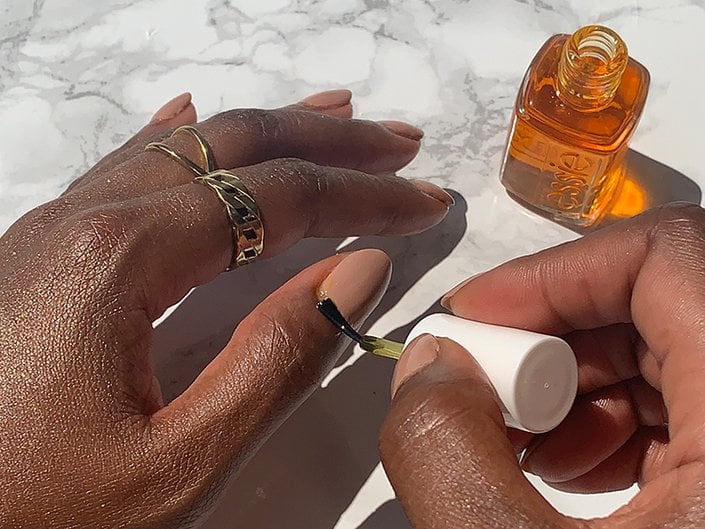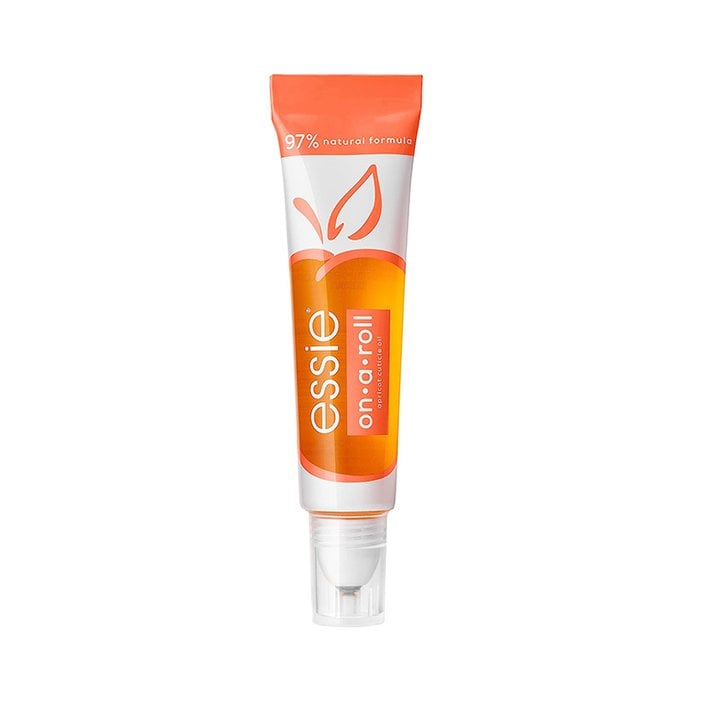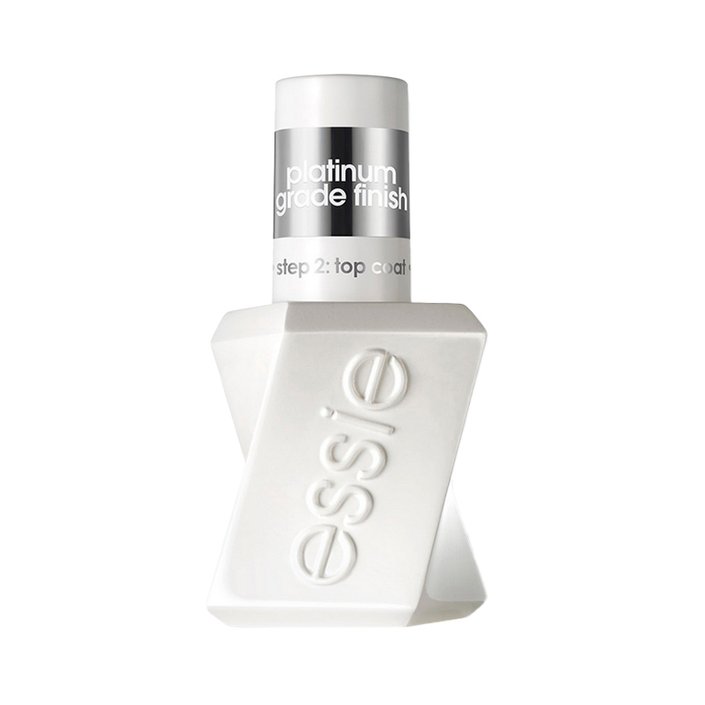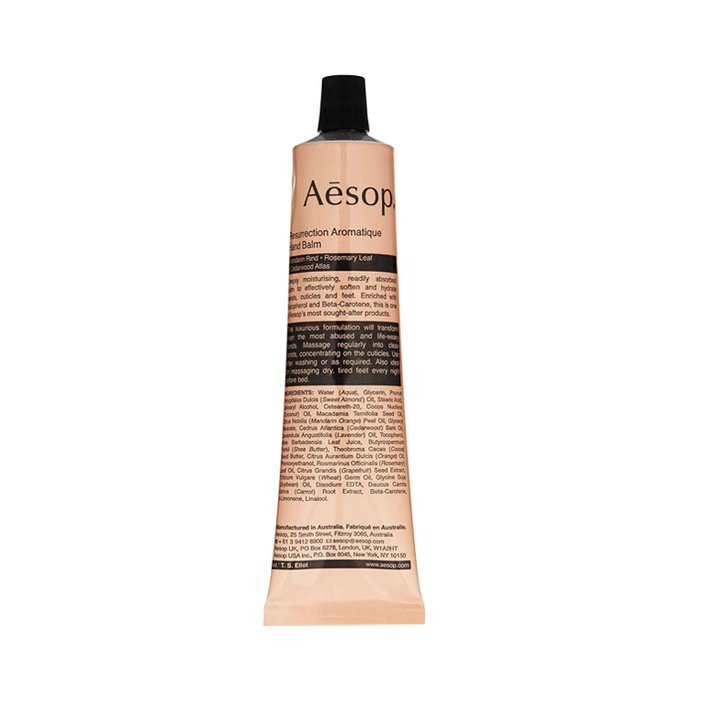How to Address and Prevent Peeling Cuticles
June 26, 2023
Why Are My Cuticles Peeling?
If your cuticles are peeling, it means the skin is dry and not receiving enough hydration, says Dr. Dana. “When the cuticle dries out, for instance from excessive hand washing, using hand sanitizers or swimming in chlorine, the cuticle can separate and peel and a hangnail can form more easily.” When this happens, you may feel the temptation to pick at the loose skin, or it may start to rub against surfaces you touch and peel away on its own, creating a cyclical effect where the skin continues to dry out and peel.
How to Fix Peeling Cuticles
Don’t Bite or Pick at the Skin
If you struggle with nail-biting or skin-picking, this step may be hard to follow, but it’s important for addressing your peeling cuticles. “If a cuticle is peeling or a hangnail is developing, never bite or tear, which can lead to infection,” says Dr. Dana. Instead, she recommends using a clean cuticle nipper to cut the peeling cuticle or hangnail at its base. Only cut the part of skin that is peeling — avoid removing the entire cuticle. Finish by applying a moisturizer to the area.
Moisturize, Moisturize, Moisturize
Moisturize your cuticles and nail beds regularly, preferably with an oil as opposed to a cream. “Oils are preferred to creams, as creams often attract lint and dirt and are not absorbed as effectively by cuticle tissue,” says Dr. Dana. One of our go-to cuticle oils is the Essie On a Roll Apricot Cuticle Oil, which comes in a small, mess-free tube that’s easy to carry with you anywhere and apply on the go.

Make an Appointment With a Dermatologist
“If you suspect that your cuticle or the skin near the cuticle is infected, see a board-certified dermatologist,” says Dr. Dana. Even if you’re not worried about an infection, if peeling cuticles and dryness are a persistent concern for you, it may still be worth it to seek advice from a dermatologist.
How to Prevent Cuticles From Peeling
Limit Your Exposure to Harsh Chemicals
Dr. Dana recommends cutting back on your exposure to “harsh detergents and hand sanitizers, both of which will dry out the cuticles and make them more prone to peeling.” Of course, it’s still important to keep your hands clean, but if you’re using hand sanitizer regularly, make sure to also reapply your cuticle oil.
Wear Dish Gloves
Whether you’re wiping down your kitchen countertop or washing dishes after a big dinner, if you’re exposing your hands to a lot of water, they should always be covered in dish gloves. Excess water exposure, particularly if the water is hot, can further dry out your skin and exacerbate cuticles peeling.
Never Fully Remove Your Cuticles
Often during a manicure, your cuticles are removed with a cuticle nipper or liquid cuticle remover that fully dissolves the skin. While this may temporarily make your manicures appear cleaner, Dr. Dana says that doing so can severely compromise the integrity of your nails and the skin of your cuticles once they grow back. “The cuticle is the nail’s natural protective seal,” she explains. “It is like the grout in your shower between your tiles — it keeps water, moisture and organisms out of the nail unit.
When that seal is removed or becomes dry and dehydrated, it becomes compromised (picture old, dry grout) and then water and moisture is able to enter the nail unit. If the cuticle compromise persists chronically, the nail will eventually grow in irregularly.” She notes that this can lead to chronic paronychia (aka red, swollen skin behind the cuticle) as well as “white patches, bumps, thickening [and] discoloration” of the nail beds.
Cuticle Care Tips
Tip 1: Gently Push Back Your Cuticles
“The best way to care for [your cuticles] is to gently push it back in the shower with a washcloth and to apply cuticle oil after your shower and throughout the day,” says Dr. Dana. Avoid cutting skin that isn't peeling or hanging off, pushing back skin with a stick or applying liquid cuticle removers.
Tip 2: Apply — and Reapply — Your Cuticle Oil
“Most people forget to care for their cuticles,” says Dr. Dana. “It is not enough to have a manicure and to leave them untouched for the rest of the week. Cuticle oils [or] ointments should be applied daily or more if needed just like you apply moisturizer to your face every day.” The same way you likely apply lotion to your body after a shower or moisturize while your face is damp, applying cuticle oil after you wash your hands or expose them to water can help restore moisture to the area.
There’s no limit to how often you can apply cuticle oil, says Dr. Dana. “Similar to how some require multiple applications of hand cream, those with excessively dry cuticles will need to moisturize more frequently.”
Tip 3: Add a Humidifier to Your Room
We’ve written about the ways having a humidifier at your desk or in your bedroom can benefit the skin on your face, and the same holds true for your cuticles. “If you are very prone to peeling, consider a cool mist humidifier in your bedroom,” says Dr. Dana. “Cuticles are more prone to peeling in dry environments.” This is especially important to consider if you live in a very dry climate or frequently have the AC or heat turned on.
Tip 4: Don’t Peel Off Your Nail Polish
Once your nail polish starts to chip, it can create a vicious cycle of picking. But did you know that by chipping away at your polish, you could be removing pieces of your nail with it? What’s more, this action can leave your nails feeling weak and brittle. When looking to remove old or chipped nail polish, reach for a nail polish remover or visit a salon. To make your manicures last longer, make sure to seal in your polish with a reliable top coat, such as the Essie Gel Couture Top Coat.

Tip 5: Avoid Excessive Hand Washing
Frequent hand washing is very important, but it can also dry out your skin and nails, making peeling cuticles even more of a possibility. If you have to wash your hands often, follow up with a moisturizing hand cream and a reapplication of cuticle oil.
Tip 6: Moisturize Your Hands and Nails
Peeling skin, no matter where it appears, is a sign of dryness. To help prevent your cuticles keep your skin hydrated. Make sure to moisturize your hands and nail beds regularly. We love the La Roche-Posay Cicaplast Hand Cream for Dry Hands & Damaged Hands, which is enriched with nourishing shea butter, niacinamide and glycerin. We also recommend the Aesop Resurrection Aromatique Hand Balm, which cushions the skin with emollients and has a citrusy, woodsy scent.

Read more
EXPLORE BY TOPICS AND BRANDS
- skin-type
- Dry Skin
- Aesop
- La Roche-Posay



























